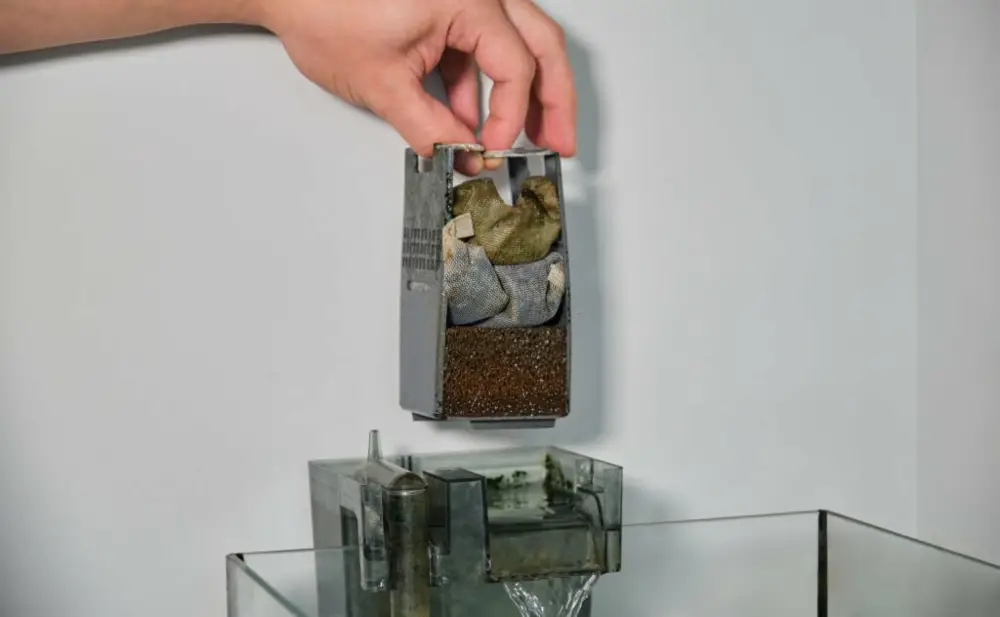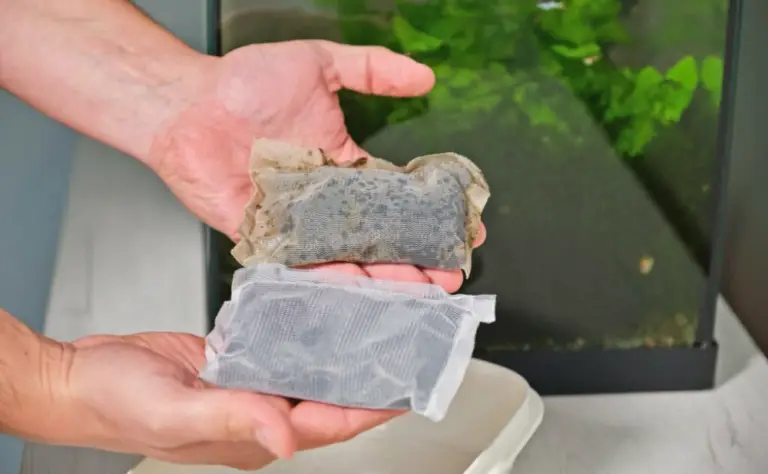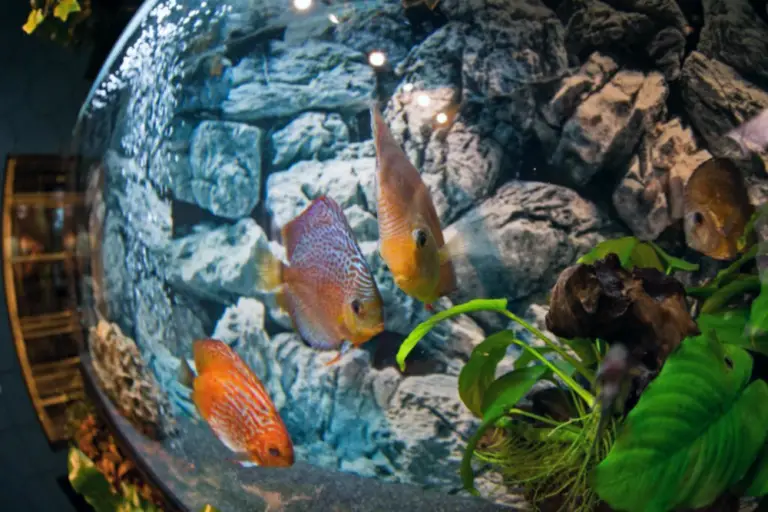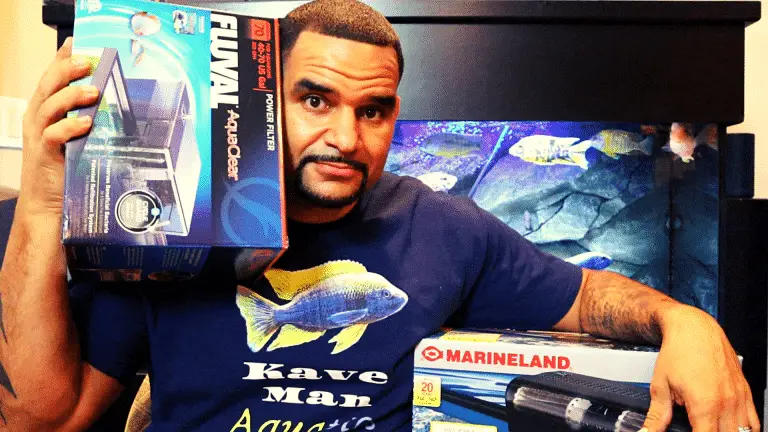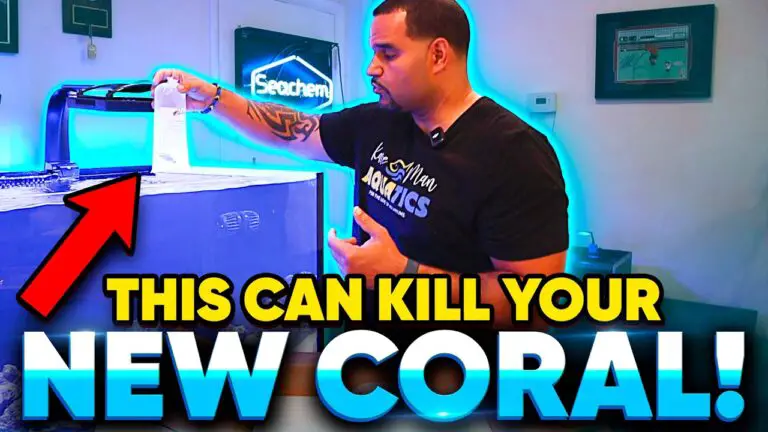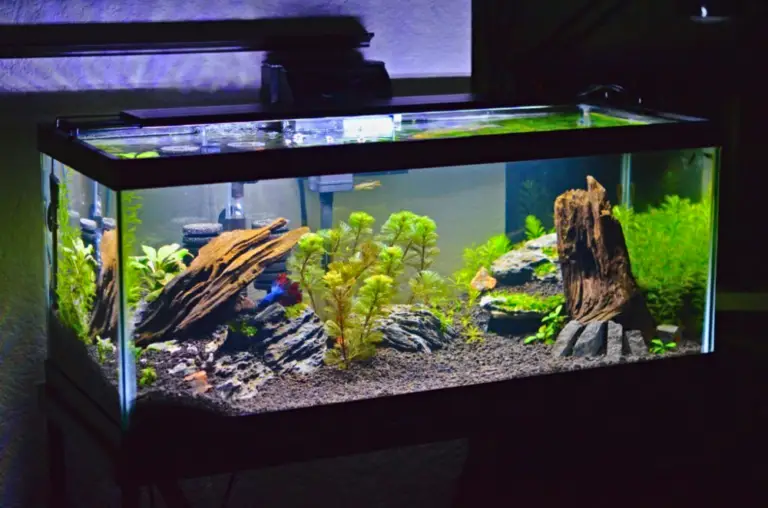How to Clean an Aquarium Filter (Bacteria Friendly)
Keeping our fishy friends in tip-top shape involves more than just the swish of a net and a water change. You need a trusty aquarium filter! Yet, the real magic lies in the beneficial bacteria nestled within. In our guide on how to clean an aquarium filter, we’ll dive into the essential art of maintaining a clean filter without bidding adieu to those helpful bacteria colonies.
Step-by-Step on How to Clean an Aquarium Filter
Here’s an easy guide with simple steps to keep things squeaky clean while maintaining a bacteria-friendly aquarium filter.
Step 1: Gather Necessary Supplies
Before diving in, gather your tools for a hassle-free cleaning session. You’ll want the following:
- Dechlorinated water,
- A bucket dedicated to tank use,
- A soft brush or sponge, and if needed,
- Replacement filter media.
These items will ensure a smooth and bacteria-friendly cleaning process for your aquarium filter.
Step 2: Turn Off Equipment
Before you start cleaning, turn off all equipment connected to your aquarium filter — like the pump or any powerheads. This step prevents mishaps and keeps both you and your aquatic friends safe during the maintenance process. A little pause in the filtration won’t harm your fish for a short while, but it’s crucial for a bacteria-friendly filter clean-up.
Step 3: Assess the Filter
Now’s your chance to check out the state of your filter! Step back and assess how it’s doing. Look for any visible dirt, clogs, or issues that might be affecting its function. Identifying any potential problems now will help you decide on the cleaning approach and keep your beneficial bacteria safe.
Step 4: Cleaning the Mechanical Media

Ah, it’s time to give your filter’s mechanical media a little TLC! This part usually holds the physical debris — think sponges, floss, or pads. Rinse these materials gently in the aquarium water you’ve set aside.
Avoid using tap water or cleaning them too thoroughly, as you want to retain some of that beneficial bacteria. A gentle squeeze or swish will do, just enough to remove the larger gunk without disrupting the bacteria paradise.
Step 5: Cleaning Biological Media
This step involves delicately rinsing biological media — like ceramic rings or bio-balls — in tank water. It’s crucial not to disturb the thriving bacterial colonies. A gentle swish or shake will remove accumulated debris without evicting your bacterial buddies. Be their friendly caretaker and clean with a light touch, ensuring a cozy home for your beneficial bacteria!
Step 6: Maintaining Chemical Media
Chemical media — like activated carbon or Seachem Purigen — play are crucial in maintaining water quality by absorbing impurities. Unlike mechanical or biological media, these don’t harbor bacteria but need occasional maintenance. When they become saturated, it’s time for a change.
Simply replace the media as per the product instructions to keep their purifying magic working. Always handle these with care, and remember, they’re not eternal! But with a little maintenance, they’ll continue to ensure your tank water stays crystal clear and safe for your fishy friends.
Step 7: Partial Water Change
A partial water change is like a mini-refresh for your tank. Start by siphoning out around 10-15% of the tank water. This helps remove accumulated debris and excess nutrients. Then, carefully add in the fresh, dechlorinated water.
Don’t forget to match the temperature and parameters of the existing tank water. This process assists your filter and minimizes stress on your aquatic pals. It’s like giving your aquarium a rejuvenating spa day, ensuring a clean and cozy habitat for your finned buddies.
Step 8: Reassembly and Restart

Assemble the filter parts back together as per your aquarium filter’s manual. Before reattaching it, give it a final double-check, ensuring everything’s snugly fit. Once it’s all set, turn the equipment back on, and voilà! Your filter is back to its bacteria-friendly, water-purifying business. Just imagine, your aquatic ecosystem is about to thrive, thanks to your maintenance prowess.
Step 9: Monitor Water Conditions
Alright, the cleanup’s done, but our job isn’t over yet! Keep an eye on the water parameters — pH, ammonia, nitrites, and nitrates. Regularly check these levels for a few days to ensure they’re within the safe ranges. Your filter may take a day or two to settle back into its optimal rhythm. If the levels are a bit wonky, don’t panic! It’s quite normal after maintenance. Just stay observant, and your fish will thank you for keeping their home sweet and healthy.
Step 10: Regular Maintenance
Consistency is key! Aim for a monthly maintenance routine — this keeps everything running smoothly. A little love and attention will go a long way in maintaining a healthy filter and a happy fish family. Trust me, a little bit of regular effort is way easier than dealing with a major filter emergency! Stick to your schedule, and your fish will thank you with their vibrant colors and playful antics.
Extra Tips
Here are some extra tips for cleaning aquarium filters while safeguarding beneficial bacteria:

- Use tank water for rinsing: When cleaning filter media, use water taken from the aquarium. This water contains the beneficial bacteria necessary for maintaining the tank’s biological balance.
- Partial cleaning: Instead of deep-cleaning the entire filter at once, opt for partial cleanings. This ensures some beneficial bacteria remain to repopulate the filter.
- Avoid tap water chlorine: Tap water often contains chlorine or chloramine, harmful to beneficial bacteria. Always dechlorinate or use aged water when cleaning the filter.
- Preserve filter media: If replacing filter media, avoid changing everything simultaneously. Gradually replace a portion at a time, allowing new media to colonize with beneficial bacteria.
- Maintain consistency: Keep the cleaning routine consistent. Fluctuating maintenance schedules can stress fish and disrupt the tank’s ecosystem.
- Monitor water parameters: Regularly check water parameters after cleaning to ensure ammonia and nitrite levels remain within acceptable ranges.
- Gentle cleaning: When rinsing filter media, do so gently. Avoid squeezing or washing too vigorously to prevent damaging the bacteria colonies.
- Observation is key: Keep an eye on fish behavior and water clarity after cleaning. Any sudden changes might indicate stress or an imbalance caused by cleaning.
- Avoid chemical cleaners: Refrain from using chemical cleaners or detergents to clean filter parts. Even trace amounts can harm beneficial bacteria.
- Patience is essential: After cleaning, monitor the tank closely for a few days. The beneficial bacteria may take some time to re-establish, so patience is vital.
FAQs
Still have questions? Take a look at the FAQ — maybe we have the answer you’re looking for.

Why is it important to clean an aquarium filter?
Cleaning the filter prevents clogging, maintains water quality, and ensures proper oxygenation and filtration for fish health.
How often should I clean my aquarium filter?
Frequency depends on the filter type and tank conditions. Generally, partial cleaning or maintenance every 2-4 weeks is advisable, avoiding full cleanouts at once.
Will cleaning the filter harm the beneficial bacteria?
Aggressive cleaning or replacing all filter media at once can disrupt the beneficial bacteria colonies. Rinsing gently in old tank water helps preserve these bacteria.
Can I use tap water to clean the filter media?
Tap water often contains chlorine or chloramine that can kill beneficial bacteria. Use old tank water to rinse filter media instead.
What happens if I clean the filter too thoroughly?
Excessive cleaning can remove beneficial bacteria, causing a spike in ammonia or nitrite levels, and potentially harming fish.
Should I clean all parts of the filter at the same time?
It’s best to stagger cleaning different parts of the filter to prevent a complete loss of beneficial bacteria. Avoid cleaning all parts simultaneously.
Can I change the filter media completely?
Changing all filter media at once risks removing most beneficial bacteria. Gradual replacement or cleaning portions of the media is safer.
How do I know if my filter media needs cleaning?
Visual inspection for debris, reduced water flow, or foul odors indicates the need for filter maintenance. Regular monitoring helps catch changes in water quality.
Can I add beneficial bacteria supplements after cleaning the filter?
Adding bacterial supplements may help re-establish colonies. Ensure the supplement is compatible with the tank and follow dosage instructions carefully.
What happens if my filter stops working during cleaning?
If the filter stops temporarily during cleaning, it shouldn’t harm the beneficial bacteria, especially if the process is swift. Restarting it promptly with clean hands is advisable.
Keeping Your Tank Happy

Cleaning your aquarium filter while preserving beneficial bacteria? Mission accomplished! For all the newbie aquarists out there, kudos on taking these first steps! Embrace the learning curve — you’re doing swimmingly.
Now, explore Aquabuildr! Dive into a world where tank setups are a breeze. With its intelligent algorithm, crafting your dream tank becomes a splash. Discover a whole new way to make your aquatic vision a reality. Trust me, your fish will thank you!
Download the app from the Google Play Store or Apple App Store for FREE!
-
How to Clean an Aquarium Filter (Bacteria Friendly)
Master the art of cleaning an aquarium filter with our guide, ensuring good bacteria thrive. Ideal for fish-keeping beginners seeking healthy habitats.

